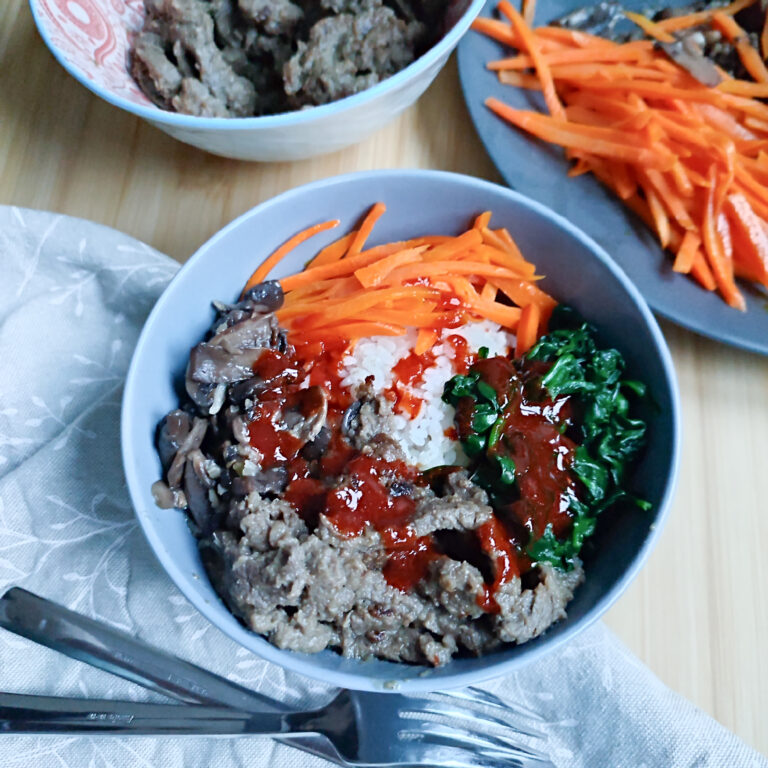Bibimbap, a popular Korean dish with a rich history and cultural significance, translates to ‘mixed rice,’ in Korean which describes various ingredients mixed together with rice. The modern form of Bibimbap we know today was influenced by a similar dish called Goldongban, originating during the Joseon Dynasty (1392–1910). Bibimbap captures vibrant colours, flavours, and nutritional balance present in the dish, which are the very essence of Korean cuisine. The presentation of Bibimbap is a beautiful array of colourful vegetables, meat, and a fried or raw egg atop a bowl of rice, finished with a dollop of Gochujang, a spicy red pepper paste that perfectly complements Bibimbap.
Meanwhile, Bulgogi, another beloved Korean dish, shares a long history akin to Bibimbap. Bulgogi, which translates to “fire meat” in Korean, speaks to its traditional preparation over an open flame. Originating in the Goguryeo era (37 BC–668 AD), Bulgogi was initially known as maekjeok, which is the earliest version of Bulgogi. As time went by, several changes were made in preparing maekjeok, leading to another version known as neobiani. Neobiani consisted of thinly sliced meat marinated in soy sauce, garlic, sesame oil, and seasonings before being skewered and grilled. Over time, changes in cooking methods and ingredients led to the Bulgogi we know and enjoy today. Bulgogi typically consists of thinly sliced beef (though pork or chicken can also be used), marinated in a blend of soy sauce, sugar, sesame oil, and garlic. Bulgogi can be cooked in various ways—grilled, pan-fried, or stir-fried. It serves as a versatile ingredient, delicious on its own or as a filling in dishes like ssam (wraps), bibimbap, or as part of a traditional Korean meal with rice and side dishes.
In this recipe, I decided to combine the best of both worlds – Bulgogi & Bibimbap – the mashup we never knew we needed. Trust me when I say that combining these two in a single meal is a flavour explosion in your mouth – incredibly delicious!
BEE ROLL
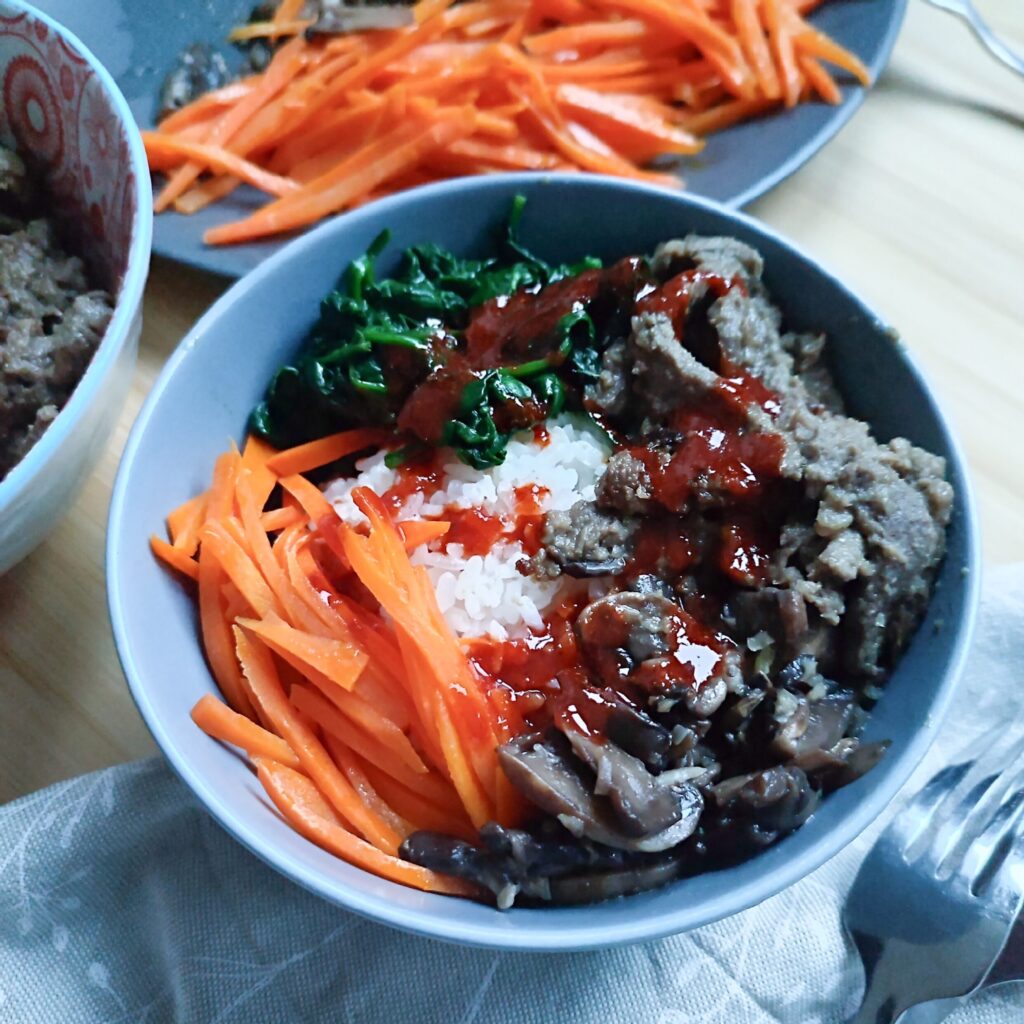
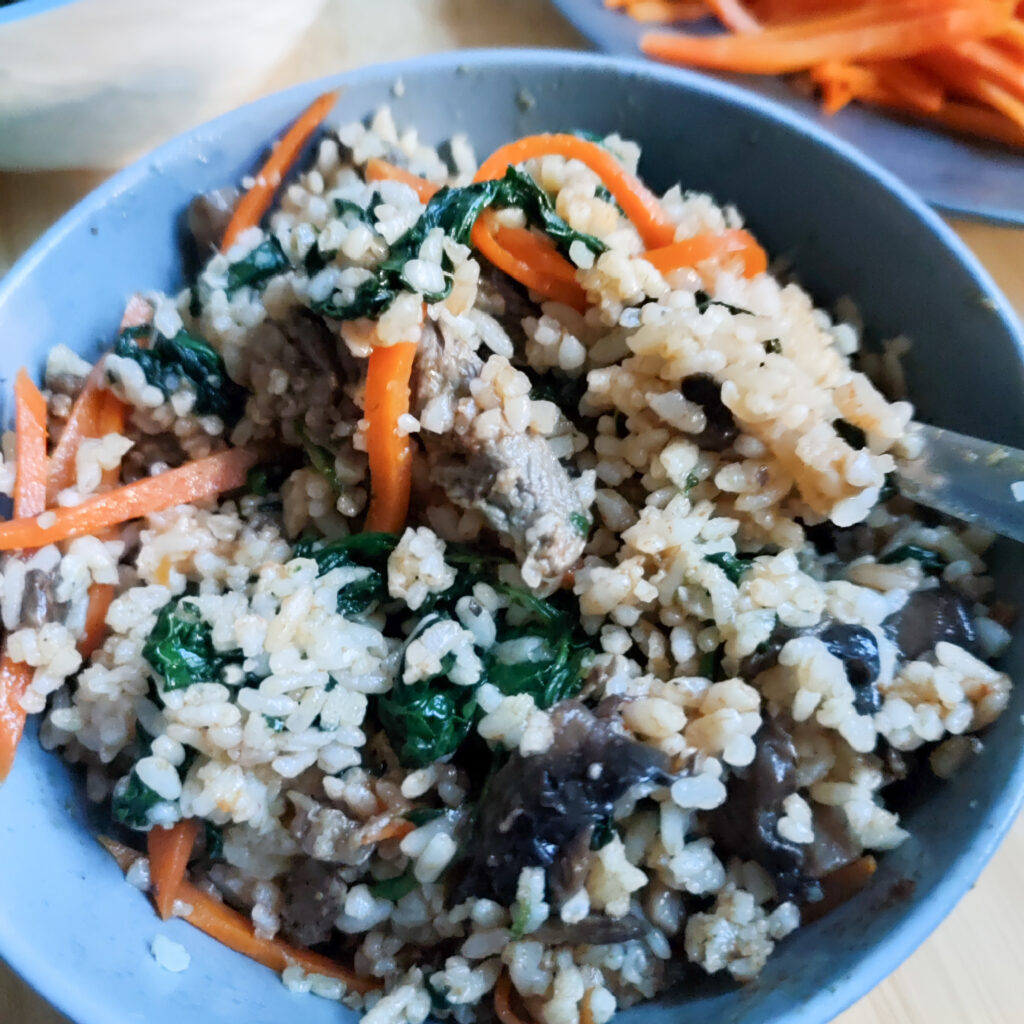
TIPS & TRICKS / SUBSTITUTIONS
SUBSTITUTIONS
Syrup & Vinegar
This recipe requires brown rice syrup and vinegar for both the Bulgogi marinade and the Gochujang sauce mix. I found both items at my local Korean grocery shop. However, I understand that not everyone may have easy access to these ingredients, especially where they might be hard to find or expensive. In such cases, you can substitute the brown rice syrup with corn syrup (or just 2 teaspoons of white sugar) and replace brown rice vinegar with either apple cider vinegar or regular cooking vinegar. While the taste might vary slightly from the intended recipe, it will still be just as delicious!
Pear
Regarding the pear used in the Bulgogi recipe, Korean pear is commonly recommended. However, as I couldn’t find Korean pears, I opted for Conference pears available at my local store. If you don’t have Conference pears, any sweet pear will do as an alternative. Another option is to use 40 ml of pure pear juice instead.
Vegetables
For the vegetables in Bibimbap, although mushrooms, carrots, and spinach are used in this recipe, feel free to swap them out for paprika/bell peppers (thinly sliced), zucchini/courgette (cut into matchsticks), bean sprouts, aubergine (halved and thinly sliced), or even kimchi (Korean fermented cabbage).
STEPS ON MAKING BULGOGI BIBIMBAP
Slice the chuck steak into 1/2 cm thick fillets, then cut them into long strips and set aside. In a mixing bowl, combine all the bulgogi ingredients except the chuck steak and oil. Use an immersion blender to blend them into a smooth mixture. Once done, add in the beef and mix it until it is thoroughly coated. Let it marinade for 30 minutes.

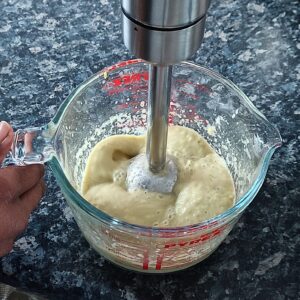
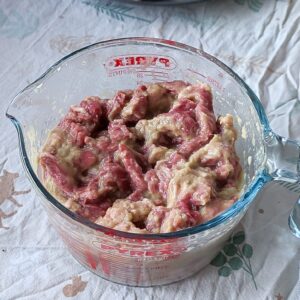
Follow the instructions on the packet to prepare the sushi rice.
Next, get the vegetables ready for bibimbap. Peel and slice the carrot diagonally, then slice thinly into matchsticks.Slice the mushrooms thinly. Wash the spinach, drain it well, and keep the veggies separate, even after cooking.

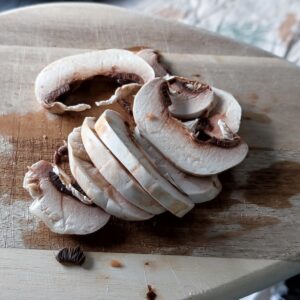

Make the gochujang sauce by mixing all the ingredients. Whisk until everything’s well combined. If the sauce seems thick, add 1 tsp more vinegar and whisk again. Set it aside for later.


Heat 5 tbsp of oil in a pan on medium heat for the bulgogi. Once hot, add the marinade and fry for 5 minutes. As it cooks, some liquid will be released from the beef. Increase the heat to medium-high and continue frying for 5 more minutes until it thickens, and you see a bit of charred spots on the beef. Take it off the heat and set it aside.
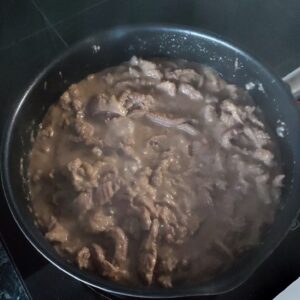
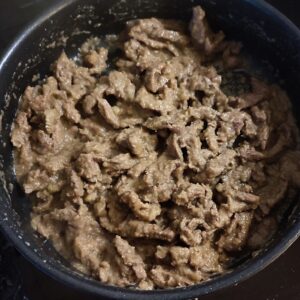
Using the same pan, heat 1 tsp of oil on medium heat. Once the oil has heated up, add carrots, salt and flash fry for 3 minutes, then set them aside. Wipe the pan clean using kitchen paper. Then, heat 1 tsp of oil, and fry the mushrooms with minced garlic until liquid appears, then add salt. Keep cooking until the liquid evaporates, and set aside. Repeat the process of wiping the pan. Lastly, heat 1 tsp of sesame oil, fry the spinach until liquid appears, add salt, and cook until the liquid evaporates.

Assemble the ingredients together. In a bowl, scoop in some rice, arrange carrots, mushrooms, spinach, and bulgogi on different sides of the rice. Finish it off by drizzling the gochujang sauce. Additionally, add a sunny-side-up egg if desired. Mix it all together with a spoon and dig in!
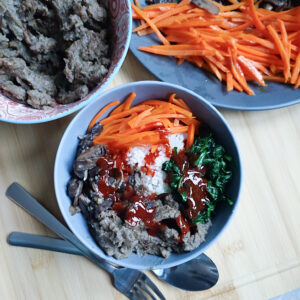
STORAGE
While bibimbap is best enjoyed fresh and not typically recommended for storing, if you need to store it, place it in an airtight container in the refrigerator for a maximum of 1 day. When you’re ready to consume it, heat a pan over medium heat. Add 1 teaspoon of vegetable oil, allowing it to heat up. Then, combine all the ingredients in the pan and stir-fry everything together for about 5 minutes. Remove from heat and enjoy!

Bulgogi Bibimbap
Ingredients
Bulgogi
- 500 grams Chuck Steak
- 3 Spring Onions
- 2 Garlic Cloves
- 1/2 Brown Onion
- 1/2 Pear
- 1 inch Ginger
- 2 tablespoons Sesame Oil
- 1 teaspoon Brown Sugar
- 1 teaspoon White Sugar
- 1 teaspoon Brown Rice Syrup
- 1 teaspoon Brown Rice Vinegar
- 2 teaspoons Light Soy Sauce
- 5 tablespoons Vegetable Oil neutral tasting oil
Bibimbap
- 1 Carrot
- 200 grams Spinach
- 250 grams White Button Mushrooms
- 2 Garlic Cloves minced
- 2 teaspoons Vegetable Oil neutral tasting oil
- 1 teaspoons Sesame Oil
- 1 1/2 cups Sushi Rice
Gochujang sauce mix
- 1 tablespoons Gochujang paste
- 1-2 teaspoons Cayenne Powder depending on heat preference
- 2 Garlic Cloves minced
- 2 teaspoons Brown Rice Syrup
- 2 teaspoons Brown Rice Vinegar
- 1 teaspoons Light Soy Sauce
- 1 teaspoon Salt
Instructions
- Slice the chuck steak into 1/2 cm thick fillets, then cut them into long strips. Combine the bulgogi ingredients (excluding the chuck steak) in a mixing bowl and blend until smooth. Add the beef, coat thoroughly, and let it marinate for 30 minutes. Follow packet instructions to prepare sushi rice.
- Prepare bibimbap veggies: slice carrots into matchsticks, thinly slice mushrooms, and wash and drain spinach. Keep veggies separate (even after cooking).
- Make Gochujang sauce by mixing all the ingredients. Set aside. Heat 5 tbsp of oil in a pan for bulgogi on medium heat. Fry marinade for 5 mins, then increase to medium-high heat for 5 more minutes until thickened. Set aside.
- In the same pan, heat 1 tsp of oil, flash fry carrots with salt for 3 mins, set aside. Wipe pan, add 1 tsp of oil, fry mushrooms with minced garlic until liquid appears. Add salt and keep frying until liquid evaporates, set aside. Wipe pan, heat 1 tsp of sesame oil, fry spinach until liquid appears, add salt and keep frying until liquid evaporates as well, set aside.
- Assemble: In a bowl, add rice, arrange veggies and bulgogi around the sides. Drizzle with Gochujang sauce, add a sunny-side-up egg if desired. Mix and enjoy!
NUTRITION FACTS
Total Fat: 39.16 mg
Sodium: 1771.66 mg
Dietary Fiber: 6.17 mg
Protein: 35.53 g
Vitamin C: 23.64 mg
Cholesterol: 82.5 mg
Carbohydrates: 77.26 g
Sugars: 9.84 g
Vitamin A: 2187.8 mcg
Iron: 6.76 mg
Daily values based on a 2,000 calorie diet.
